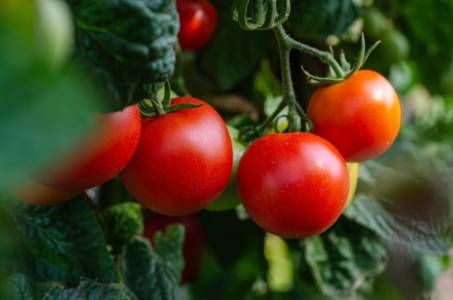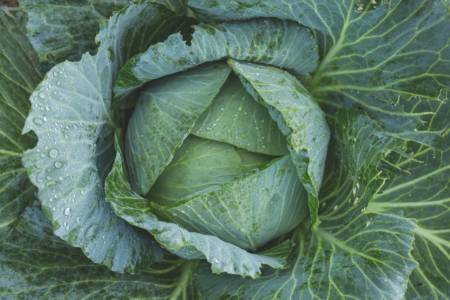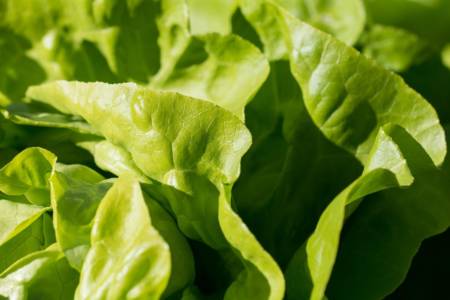What’s the most resilient strategy that comes to mind for developing a locally adapted, healthy food supply? Specifically, one that has the best chance of producing in difficult conditions such as drought, flood, pestilence, “poor” soil, and crop disease in a changing, challenging climate?
 We know that the most bio-diverse ecosystems are the healthiest. Yet within species, many of our most popular crops have a narrow genetic base, giving them dependably uniform traits. As shoppers we expect uniformity, we are used to knowing exactly what product we are getting. On the other hand, this conformity means plants of the same large single variety with a narrow genetic base are subject to being wiped out all at the same time.
We know that the most bio-diverse ecosystems are the healthiest. Yet within species, many of our most popular crops have a narrow genetic base, giving them dependably uniform traits. As shoppers we expect uniformity, we are used to knowing exactly what product we are getting. On the other hand, this conformity means plants of the same large single variety with a narrow genetic base are subject to being wiped out all at the same time.
The plants with the most genetic diversity within the species –- not just across species –- are those best adapted to diverse difficult conditions….the ones left standing after a spree of grasshoppers or diseases, a hot season with little water, a devastating flood are those which can handle these conditions. These are the plants to save seed from and replant the next year, the progenitors of your locally adapted crop. (Readers interested in plant nutrient density/health in evolutionary garden breeding: since this is not the focus of this current article, consider The Healthy Benefits of a Stressed Out Plant and Stress and Defense Responses in Plant Secondary Metabolites Production.
When we save seeds from the successful plants and cross those with successful plants from other varieties, continually building and maintaining vibrant seed stock, we are gardening the way all our ancestors gardened and the way modern people in less industrialized contexts on every continent continue to garden today.
Evolutionary Gardening
Scientifically, this is called evolutionary plant breeding. So some gardeners have started using the term “evolutionary gardening.” You may have heard the term “landraces” applied to these robust, locally adapted crops. The English word landrace was coined from the German “land rasse,” or “country bred” over 100 years ago and means the same thing, whether applied to plant or animal breeding.
Joseph Lofthouse is this kind of a plant breeder in Utah at 5000’. When he first started growing corn from seeds that hadn’t yet been locally adapted, raccoons knocked over stalks to get to the cobs and wind blew down many others. Once stalks were down, turkeys, deer, and other animals joined in the feast.
Noticing that on the stiffer stalks still standing, the cobs higher than his waist were untouched and growing beautifully, he began saving seed from those cobs and replanting them. Today he grows corn that stays up in the wind and suffers no animal predation. He and other landrace plant breeders also save seed from the earliest maturing plants, tastiest, most drought-resistant, and most disease resistant. No more powdery mildew, thanks to saving seed from the few plants that were able to resist it and replanting them in a mass cross with cukes that have other desirable traits.
No Need For Fertilizers, Biocides, or Mulch
 Note that Lofthouse does not use any inputs–no amendments, fertilizers, biocides (even organic), no plastic mulch, no imported straw. He says it’s important to know which plants grow well in your conditions as they are. Those are the plants that can form strong microbial associations. Those are the plants you want. Cull the plants that require coddling. If you raise them with inputs–fertilizers, amendments, biocides–you will be breeding plants dependent on these inputs. This is not “wrong” if that’s what you are breeding for and you have plenty of long-term inputs. Know your goals and resources.
Note that Lofthouse does not use any inputs–no amendments, fertilizers, biocides (even organic), no plastic mulch, no imported straw. He says it’s important to know which plants grow well in your conditions as they are. Those are the plants that can form strong microbial associations. Those are the plants you want. Cull the plants that require coddling. If you raise them with inputs–fertilizers, amendments, biocides–you will be breeding plants dependent on these inputs. This is not “wrong” if that’s what you are breeding for and you have plenty of long-term inputs. Know your goals and resources.
Lofthouse has finally come out with a most helpful book for new evolutionary gardeners on his practice and experience, Landrace Gardening: Food Security through Biodiversity and and Promiscuous Pollination. Promiscuous pollination is mass crossing of as many varieties in one season as makes sense to you (from 3 to thousands.)
How do you do evolutionary gardening?
Start with a food crop you love that outcrosses easily (spreads and receives pollen between and among plants) –fava or runner beans, corn, cukes, melons, spinach or squash for instance. Let’s say you choose melons.
In the first generation gather all the melon varieties with traits as close to what you want as possible, favoring landrace seeds if they are available so you start with good genetic diversity. You can add as many other melon seed varieties as makes sense to you, given your time and space, from any source (neighbors, your own seed stash, seed swaps, heirloom sources, your local hardware store, produce from your farmer’s market or grocery store.)
Plant them mixed up together (in a pattern or not–up to you); don’t keep the varieties in separate rows. Grow them out without protecting or fertilizing them to see what’s left standing. The first year the ecosystem does most of the selecting (pests, diseases, drought, early frost etc). The harvest may be good, but if you are growing something that needs a lot of adapting, getting a 10% yield or even a 1% yield is great. Save seeds from the survivors.
The second year, you can start selecting the traits that are important to you and your community (short season, drought-tolerant, flood-tolerant, great taste, color etc.) Add other varieties if you wish. You can expect a better harvest because everything in your garden has already shown that it can produce seeds in your garden. Save seed from the best of these, according to the traits you are selecting for. The third year your landrace begins to stabilize and sing. After this, it is often about fine-tuning and maintenance.
What are the obstacles to landrace gardening?
 For most of us, it’s our modern gardening training. First, we are trained to buy seeds, even though many of them come from far-away growing areas very unlike where we will be growing them; we don’t know how they are grown ecologically or socially. (Please support local seed companies.)
For most of us, it’s our modern gardening training. First, we are trained to buy seeds, even though many of them come from far-away growing areas very unlike where we will be growing them; we don’t know how they are grown ecologically or socially. (Please support local seed companies.)
Many of our bought seeds exhibit “hybrid vigor,” vigor only reliable in the hybrid generation we have just purchased. We are told we have to keep buying them if we want equally vigorous plants. We are also told “you can’t save seeds from hybrids,” because they won’t breed true. Meaning: you have to keep buying them.
Ah, but you can save and replant commercial hybrids. Most won’t breed true to the parent, but you can certainly add them to a mass cross for more genetic diversity and from there select the ones that do well, those which are more available to beneficial microbes and palatable to pollinators and people.
We are trained to expect uniformity both in the plants and their problems. Rather than being taught to breed out the problems and select for problem-resistant plants, we are trained to think it’s normal to grow disease-susceptible tomatoes, bug-susceptible squash, blight-susceptible potatoes, cukes, and the rest. We are trained to apply sprays, fertilizers, amendments, biocides, compost, and to grow in plastic mulch. We are not trained to trust nature.
Julia Dakin, landrace gardener/farmer and content writer for the online course on landrace gardening writes: “heirlooms are a piece of important history, but they are not a solution to the damage that breeders have inflicted on the more modern varieties. By isolating varieties to maintain them ‘true to type,’ we are also limiting the plants ability to adapt to changing conditions. Generations of genetic isolation means that plants are more susceptible to disease and need extra resources. Why not use our favorite heirloom varieties as ancestors in a more resilient, less input-intensive garden?”
Landrace gardening is based on what works for the ecosystem, the farmer/gardener, and their community. Just start crossing a few varieties in your backyard, on your land, on your balcony or buy food from those who do. Create a neighborhood evolutionary gardening group. And share the results so we can all learn to produce more resilient and delicious food in a changing climate.
If you’re interested in evolutionary gardening, join our Regenerative Agriculture Committee or stay tuned at the 350CO Local Food & Regenerative Ag Hub on Facebook.
Pam Sherman writes on nature-based food security in a changing climate and can be reached at pamsher123@gmail.com
